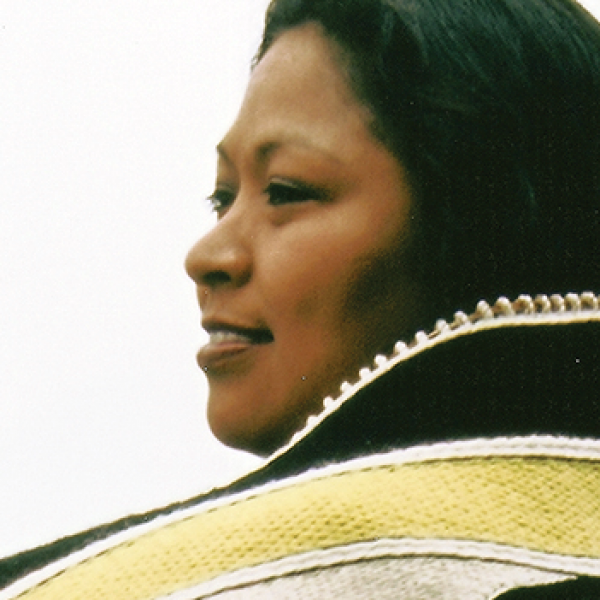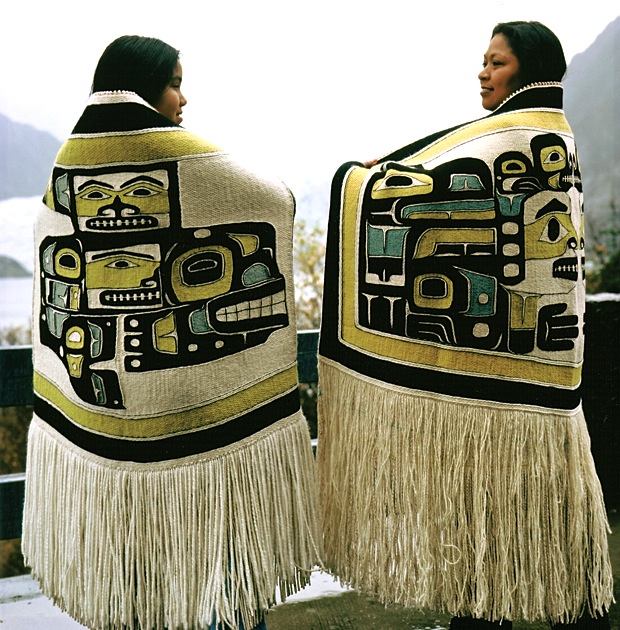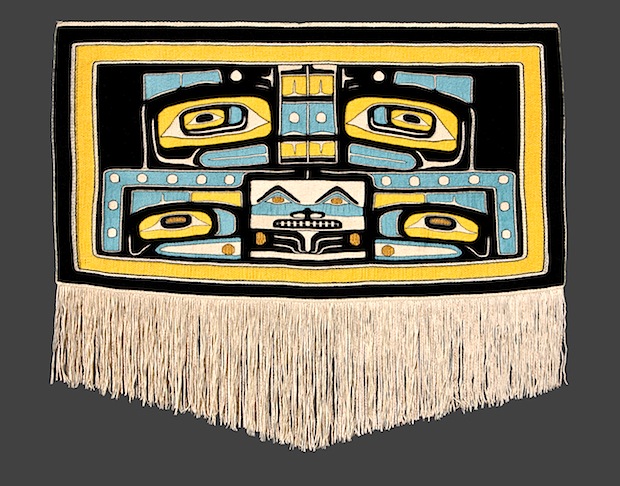Anna Brown Ehlers

Photo by Hulleah Tsinhnahjinnie (Seminole/Muskogee/Dine)
Bio
Anna Brown Ehlers is Tlingit from the Yéil (Raven) moiety, Gaanaxteidí clan of the famed Whalehouse. She was born and raised in Juneau, and her parents' ancestral home is Klukwan. Ehlers grew up watching her grandmothers—Mary Betts and Marie Peters—do beadwork and skin sewing, and she apprenticed under master weaver and 1986 NEA National Heritage Fellow Jennie Thlunaut, a close friend of her grandmother Mary.
For the past 35 years, Ehlers has specialized in Chilkat weaving, an ancient art form indigenous to the Native people of Southeast Alaska. Throughout history, Chilkat blankets have been cherished as a sign of wealth, status, and social standing. Many ancient and modern Chilkat weavings depict the stories and histories of clans, and some are considered clan at.óowu—sacred objects that are imbued with ancestors’ spirits. Chilkat blankets are danced at secular events today and Chilkat at.óowu are brought out at ceremonies to invoke the spirits of the ancestors. While a number of her blankets are sold to museums and collectors, Ehlers prefers for her blankets to be used and danced in Tlingit ceremonies, and she often works out arrangements with clan members to purchase her blankets.
Chilkat weaving is one of the most complex weaving styles in the world. For her materials, Ehlers collects goat hides from hunters, then washes, dries, and fluffs the downy wool. Cedar bark is collected in the spring and processed into paper-thin layers. She makes the warp by spinning together two strips of wool and two strips of cedar bark on her thigh. The warp is suspended from a simple crossbeam loom, at which time the finger weaving can begin. The preparation of the warp alone takes about four months for one full-size blanket.
One of the most significant challenges in Chilkat weaving is the use of curved shapes found in Northwest Coast formline design, which are very complex and difficult to execute. One full-size blanket can take a year or longer to complete. Ehlers maintains the cultural historic tradition of her art form while introducing innovations, such as the incorporation of 24-karat gold wire, her hallmark. Her most recent innovation is the use of silk in the handspun warp and silk as the weft yarn.
Since 1984, Ehlers has taught more than 300 people the art of Chilkat weaving in classroom settings, at universities, and at heritage centers. She also has mentored dozens of apprentices in her home. She is one of a few weavers who has helped to revitalize this unique art form, which was once endangered.
She has received numerous awards, including a 2001 First Peoples Fund Community Spirit Award, a 2006 inaugural year United States Artist Award, a 2006 Alaska Governor’s Award for the Native Arts, a 2008 Best of Show at Sealaska Heritage Institute’s Juried Art Show and Competition, and a 2009 Rasmuson Foundation Individual Artist Award.
Bio provided by Sealaska Heritage Institute.



